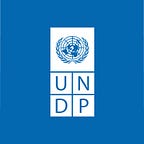Keeping people safe from floods
Meet Aida Hadzic-Hurem, Disaster Risk Reduction Project Manager, UNDP Bosnia and Herzegovina
What do you do at UNDP?
I create, implement and promote UNDP’s projects that reduce the risk of disasters in Bosnia and Herzegovina.
How does your work help people in Bosnia and Herzegovina?
Disasters pose a huge threat to people in Bosnia and Herzegovina. Floods, landslides, earthquakes, forest fires and droughts have the power to undo decades of development work. People end up losing everything. In 2014, for example, the country was hit with devastating floods that affected more than a million people. 90,000 locals lost their homes to the floods and following landslides. In the last decade, flooding and landslides have tripled in frequency. Looking at current climate change predictions, the number of extreme events like these will increase even more in the coming years.
That’s why assessing disaster risk, preparing communities for different scenarios and creating early-warning systems is so important. Ultimately, my work protects the people in my country and everything they’ve worked for. We need to move away from business-as-usual and integrate measures to tackle disaster threats into institutional and legislative frameworks.
Tell us about a beneficiary you met and why their particular story had an impact on you?
Once I worked with a family that lives on a fragile slope. When I talked to them for the first time I realized how the fear of being swept up in a landslide overshadowed their everyday lives. They had saved up for so long and worked so hard to build their precious house, but every time it started raining they were terrified to lose everything. They didn’t feel safe sleeping in their own home anymore and ended up leaving every time it started raining. Imagine living in a state of constant fear and stress like that — it’s horrifying. You could see how it was taking an emotional toll on them and their lives. Over the past years, UNDP has worked on stabilizing areas that are at risk of landslides — including the land where this family I met lives. They told me they’re eternally grateful for the stabilization of their land and for the first time they feel safe sleeping in their house when it’s raining.
What specific action can people take to prepare for a disaster?
The first thing everyone should do when moving to a new area is to inform themselves about possible disaster risks. If you want to build a house, find out whether the land is prone to landslides or other threats. That way you can either find a different area to build your house or construct your house in a way that makes it safe during extreme weather. In Bosnia and Herzegovina we just piloted a new online tool that helps the local government, but also regular people assess these kind of risks. By visiting our website you can access scientific data about disaster risk for free, and make informed decisions.
What is one useful item you would take with you during a disaster and why?
It really depends on the kind of disaster, but one thing that could save your life in a disaster really is a cell phone or some other tool of communication. That way you can ask for help if you’re stuck in a tricky situation. However, of course it can happen that the network collapses during a natural disaster so a professional walkie-talkie would be more useful.
By 2030, I want to live in a world that…
… is mastering a circular economy, where resource input, waste, emission, and energy leakage are minimized. That would make our world a safe and prosperous place for our children.
